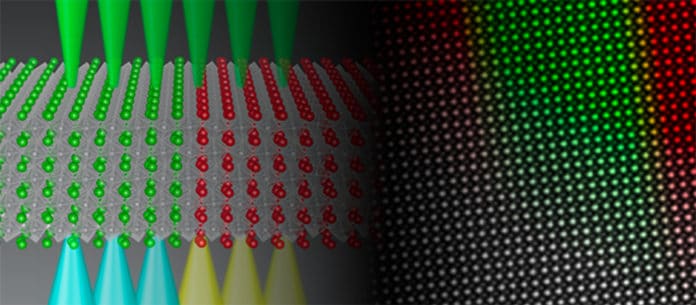“Phase transitions” are a central phenomenon in physical sciences. Solid, liquid, and gas are three well-known “phases” and, when one turns into another, that is a phase transition.
Rare-earth nickelate oxides, also called nickelates, also show phase transition- from metallic state to electrically-insulating state. Such phase transition can be exploited in future electronic devices.
Behind this conduct is a strong interaction between these mixtures’ electronic properties and their “lattice” structure – the very much arranged plan of atoms that forms a crystal. In any case, uncovering the real essence of this metal to insulator phase transition in nickelates, and having the option to control it for potential electronic devices, requires realizing how each characteristic phase emerges and evolves across the transition.
Scientists from EPFL, in collaboration with the University of Geneva, have combined two cutting-edge techniques to achieve nanoscale mapping of each distinct electronic phase.
The study’s first author, Dr. Bernat Mundet, says: “To fully understand the physics displayed by novel electronic materials and to control them in devices, new atomic-scale characterization techniques are required. In this regard, we have been able for the first time to precisely determine the metallic and insulating regions of atomically engineered devices made from two nickelate compounds with near-atomic resolution. We believe that our methodology will help to understand better the physics of this important family of electronic materials.”
Scientists combined aberration-corrected scanning transmission electron microscopy (STEM) with monochromated electron energy-loss spectroscopy (EELS).
In STEM, images are formed by scanning a beam of electrons, focused to a spot of about 1 Ångstroms in size, across a sufficiently thin specimen – in this case, a sliver of nickelate – and collecting the transmitted and scattered electrons with the use of annular detectors. Though technically demanding, this technique allows researchers to precisely visualize a crystal’s lattice structure, atomic row by atomic row.
As all the electrons are scattered and collected simultaneously, scientists could not correlate the electronic state changes with the associated lattice positions in the different nickelate compounds. It also allowed scientists to map, for the first time, the spatial configuration of their metallic or insulating regions, reaching a very high spatial resolution of around 3.5 Ångstroms (0.35 nanometers). The technique will be a valuable tool for studying and guiding these novel electronic materials’ atomic engineering.
Duncan Alexander said, “The latest electron microscopes give us an amazing ability to measure a variety of materials’ physical properties with atomic or nanometric spatial resolution. Here, by pushing the capabilities of EPFL’s Titan Themis microscope to the limits, we take an exciting step forward in this domain by proving that we can measure the changes in an electronic state across a thin film structure precisely made from two different nickelates. Our approach opens up new avenues for investigating the physics of these nickelate compounds, which have sparked research interest worldwide.”
Jean-Marc Triscone said, “The combination of amazing artificial materials that display a metal to insulator transition and very advanced electron microscopy has allowed unprecedented detailed investigations of their electronic properties. In particular, it revealed, at the atomic scale, whether the material is conducting or insulating – an important question for better understanding these materials that may be used in future computing approaches.”
Journal Reference:
- Bernat Mundet* et al. Near-Atomic-Scale Mapping of Electronic Phases in Rare Earth Nickelate Superlattices. DOI: 10.1021/acs.nanolett.0c04538
